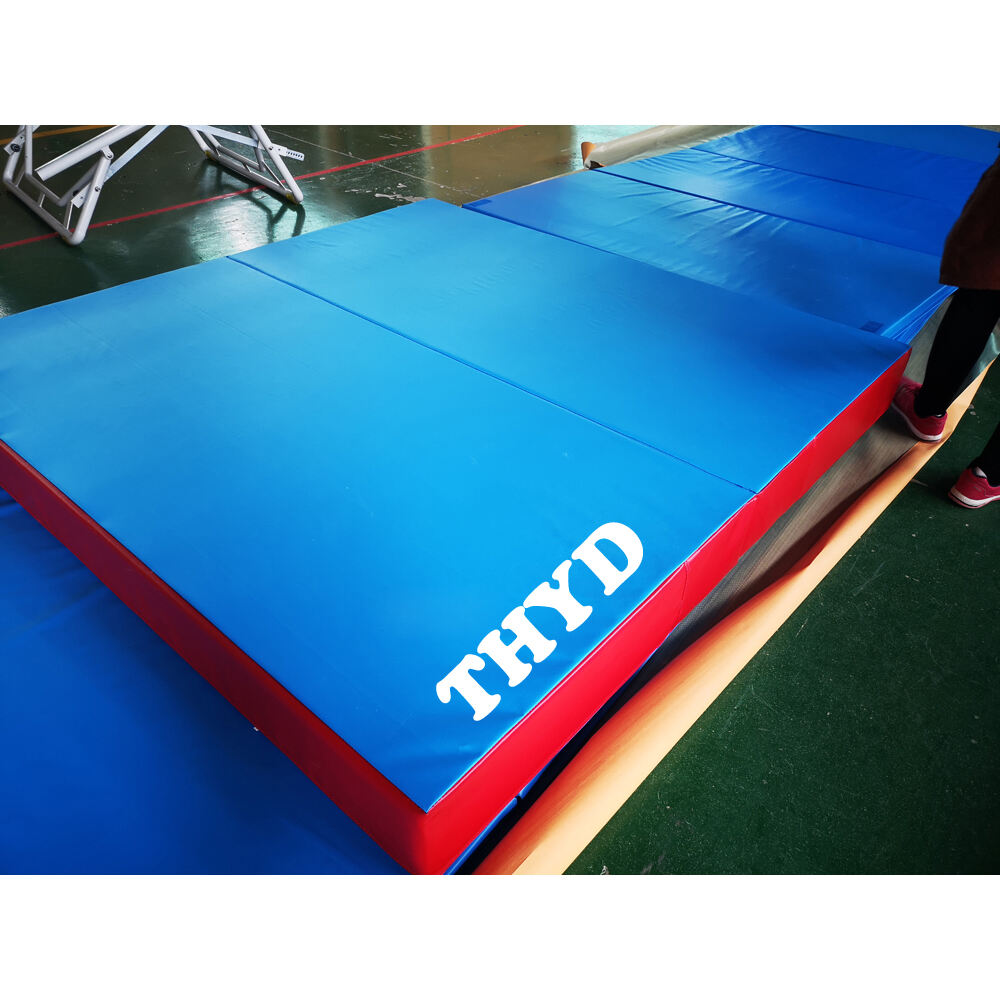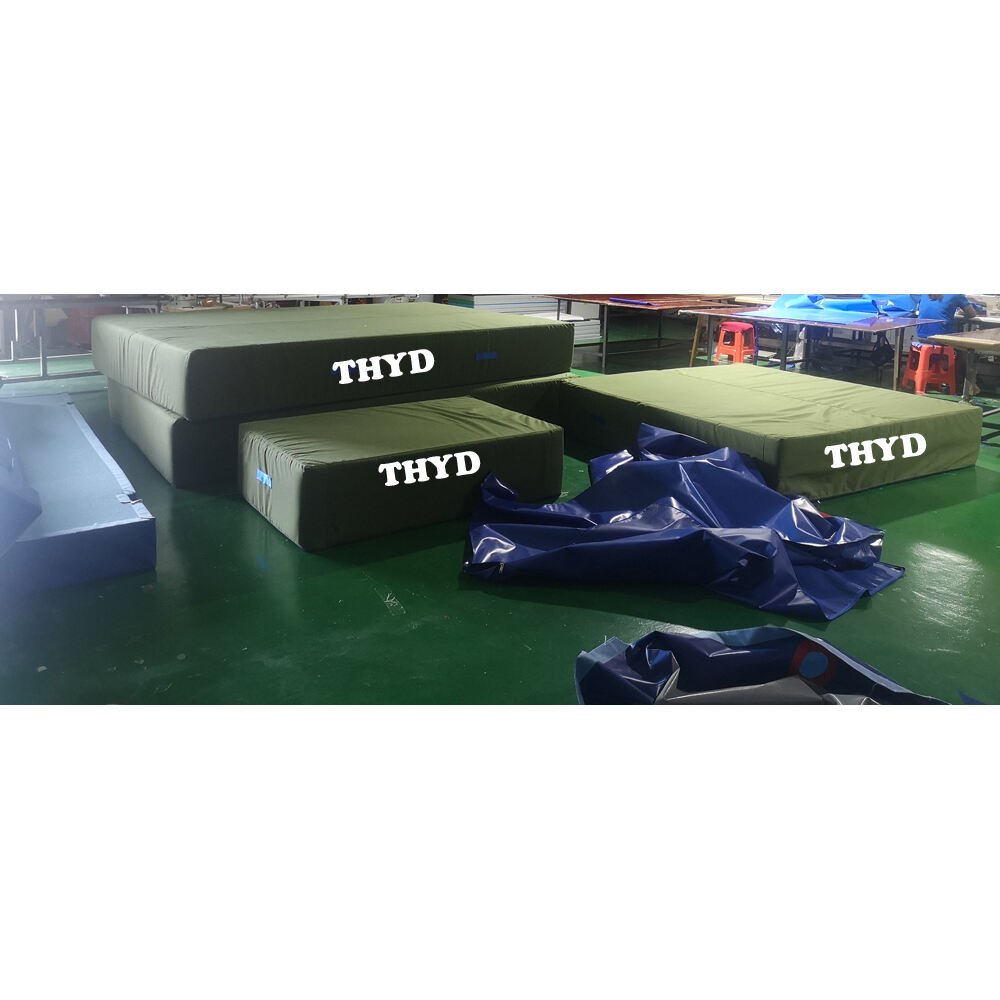How Gymnastic Mats Prevent Injuries in Gymnastics
Absorbing Shock from Jumps and Landings
Gymnastic mats are constructed to absorb high shock, decreasing the amount of shock that reaches the body when landing. Materials in these mats, including advanced foam composites, are instrumental in shock reduction. According to a research published in Journal of Sports Sciences, for mats with high density foam can effectively reduce the impact force, so as to protect the gymnast away from the injury of common sprains and fractures. The density of the foam plays an important role in determining if these absorptions take place or not. The mat with appropriate foaming density is a good cushion for your fall to guard you away from injury even from high falls, protecting every move of your jumping.
Reducing Impact on Joints and Bones
The right gymnastics mat is crucial for reducing strain on joints and bones, such as the knees and ankles. They are vital in reducing long-term joint damage by providing necessary cushioning. And according to a report in the Clinical Journal of Sport Medicine, the proper padding can decrease injuries due to bone stress quite a bit. This evidence highlights the need for high quality mats for gymnast safety. Gymnastics Cheese Mat: with a good protection effect for gymnasts or cheerleaders to do training or practice safely without slippery worries._without joint protection, the risk of hands, wrists, knees, feet and other parts of vulnerability to chronic irritation or pain increased This type of mats also as used by gymnastics tumbling trainers and coaches in other activities that require the heavy duty safety products.
Common Injuries Mitigated by Mats
Correct landing absorption performs a great deal in avoiding the soft tissue injuries like the twisted ankles, knee injuries and lower-back sprains. One survey of gymnastic coach reported a large percentage of coaches had fewer injuries reported when utilizing high-quality mats which suggest the importance of high-quality mats. You should also be investing in gymnastics mats which can significantly cut down the frequency and severity of injuries. Such mats serves as a crucial layer of protection between the athlete and the ground beneath thanks to its cushioning properties. Having these mats for use in practice settings is a step in the right direction for prioritizing athlete safety with their performance.
High-Density Foam vs. Standard Padding
High-density cushion foam offers great support and resilience, especially for serious gymnasts. High-density padding is designed to absorb shock and force to prevent injury. This advanced technology makes sure when athletes land or fall the energy of the fall is absorbed much better, decreasing the risk of injury from poor landings. ‘High density padding is good safety for the competitive gymnasts, the gym training is a significant use of gymnastics equipments, which enhance the quality of a gymnast that is why pro circle attached great importance on the quality to give you peace of mind while training’.
How Padding Distributes Force Effectively
Gymnastics trained padding is engineered to evenly transfer the overall force of the falls and landings to help prevent injury. Foam tech has come a long way and our mats are now able to absorb and provide a wider dispersal of impact forces than in the past, dramatically reducing injury rate. A report from the Journal of Biomechanics demonstrates the Importance of distributing force in gymnastic to mitigate injury. The coaches’ awareness of the use of force distribution can help them choose the most appropriate mats for different gymnastics activities which can contribute to an aid in safety.
Protecting the Spine During Complex Movements
The spine is especially susceptible in gymnastics because of the complex moves, but adequate thickness and softness available in mats offer the much-needed protection. It is reported gymnastics as a sport places gymnasts at a relatively high risk of spinal injuries, but proper matting could reduce or eliminate that risk by providing better shock absorption. Gymnastics mats are essential in cushioning the spine during flips and challenging routines. Even better, they can give gymnasts confidence in their training, knowing that they have the best in support and safety for when they're doing demanding exercises.
Explore high-quality gymnastic mats that prioritize safety and performance. Advanced padding solutions are available in a range of formats to cater to different needs, investing in such equipment for training makes a substantial difference in injury prevention and technique improvement.

Choosing the Right Thickness for Optimal Impact Reduction
Thickness Guidelines for Different Skill Levels
Selecting the right thickness for gymnastic mats is essential to ensure a safe training session. Thicker mats are always about considering the level of skill. For newbies, the thicker the mat, the better it protects against falls. Advanced and competitive gymnasts often use mats 2-4 inches thick based on advice from athletic guides. This modification permits well-trained athletes to execute more difficult elements without danger to themselves. The appropriate thickness choice depends on your skill level and whether you're a first time user or you've used pogo sticks before, and our safety, reliability and capabilities ensure the best pogo experience.
Balancing Cushioning and Stability
When looking for gymnastic mats you'll want to think about the balance of cushioning and support. Thicker mats provide better cushioning to reduce injury when landing, but they shouldn’t be too soft and squashy as to compromise the stability needed for balance and stand prep stunts and tumbling passes. Crash mats experts recommend finding pads that are a happy medium so that wrestlers can train safely while still having the control and precision needed. Talking about this balancing act is important when it comes to mats that are to be used for training and competitions since two aspects have to be taken into account - safety and performance.
Activity-Specific Thickness Recommendations
Various gymnastic routines require different mat thickness, which is why we include different thicknesses for you to choose. For example, tumbling generally requires thicker mats while practicing on balance beams means stability is the key. Activity and practice-specific guidelines underline the principle that surface thickness is key to performance, requiring a hands-on feel to exercise mat selection. Figures in the industry, demonstrate how well chosen mat thickness reduces the chance of injury and aidealises the training modalities. Using activity-specific gauging guidelines allows gymnasts to tailor their workouts and avoid the risk of possible injury.
Building Confidence and Skill Mastery with Safe Practice Mats
Psychological Benefits of Secure Landing Surfaces
The peace of mind that comes from a stable landing surface is invaluable in gymnastics. When they’re confident in their mats, that same confidence transpires to peak performances, as gymnasts perform routines knowing they have the protection they need, in case something goes wrong. Psychologically studies have found that trust in one's equipment significantly increases performance, as it enables the athlete to concentrate on skill development rather than fear of things going wrong. This confidence has an effect on the outcomes of our training, facilitating competence acquisition-experience, minimizing stress. With gymnastics mats that are dependable and secure, gymnasts are confident to push their limits and not be afraid of falling.
Encouraging Risk-Taking in Skill Development
Safe training mats are key to promoting risks for skill development. When athletes feel confident that their landing surface is safe they are more willing to try more difficult skills and that makes everyone better. The de-escalation of barriers represented by fear is a keystone that allows for a greater disposition on the part of athletes to experiment with new activities. It is a crucial style because the more one refines it, the faster one will progress and master skills in gymnastics. By reducing the risk of injury, practice mats allow gymnasts to dare new & challenging skills to develop & improve their skill from anywhere in the training, and have confidence to perform every move.
Case Studies: Progression with Proper Matting
Many schools and training centers have proven the positive effects of using quality matting in their improved statistics for performance. Evidence provided from these case studies demonstrates increased safety and skill levels for gymnasts. For instance, institutions with the use of appropriate gymnastic mats have experienced lower injury rates, allowing athletes to concentrate on improving their skills rather than dealing with injury-related setbacks. From following these trends, the constant need for premium mats whether it be for competitive or leisure purposes is quite clear and the influence of mats in the progression and performance of gymnast.
Ensuring Long-Term Safety: Durability and Maintenance of Gymnastic Mats
Materials That Withstand Intensive Training
The lifespan of gymnastic mats comes down to the type of material used to make them. Quality materials like the polyurethane and polyethylene foam play an essential role for the debris bag to withstand tough and constant use without the wear-and-tear process. Purchasing mats constructed from these exceptional foam types will guarantee both quality and longevity; yielding reliable protection through even the most demanding routines. Educating users on the benefits of durable mat materials will help them make better decisions and better investments in training equipment. Therefore, it is necessary to discuss the high-quality foam materials to improve long-term security in gymnastics.
Proper Cleaning to Preserve Shock Absorption
Regular cleaning is necessary to ensure gymnastic mat shock absorbency. Frequent cleanings will maintain the integrity of the mats by removing dirt that may interfere with mat performance. Most manufacturers suggest their own special cleaning solutions designed for the particular foam in order to help keep it in good shape for as long as possible. By following mat maintenance best practices you can prolong mat life, ensuring a safe space for your athletes. By following maintenance procedures, mats maintain excellent quality and continue to provide support to the athletes but also maintain the athlete’s safety during trainings.
When to Replace Worn-Out Mats
Identifying symptoms for wear in gymnastic mats is essential for safety of the gymnast. Signs such as cracking or flattening indicate that a mat is no longer as protective anymore and needs to be replaced. This kind of wear should be checked regularly as part of the mat use protocol. Industry standard is to change out the mats on average every 5-7 years, which is based on use and wear and tear. This is consistent with safety regulations, and helps maintain top performance, protecting the athletes so they can focus on their game.
FAQ
Why is high-density foam preferred in gymnastic mats?
High-density foam provides superior impact absorption and force distribution, reducing the risk of injuries from falls and landings.
How do gymnastic mats contribute to joint and bone protection?
They offer cushioning that minimizes stress on joints and bones, preventing long-term damage and chronic conditions.
What signs indicate that a gymnastic mat should be replaced?
Indicators such as tearing, flattening, or diminished shock absorption suggest it's time to replace a gymnastic mat.
How often should gymnastic mats be cleaned?
They should be cleaned regularly according to manufacturer's guidelines to maintain shock absorption and extend material lifespan.


